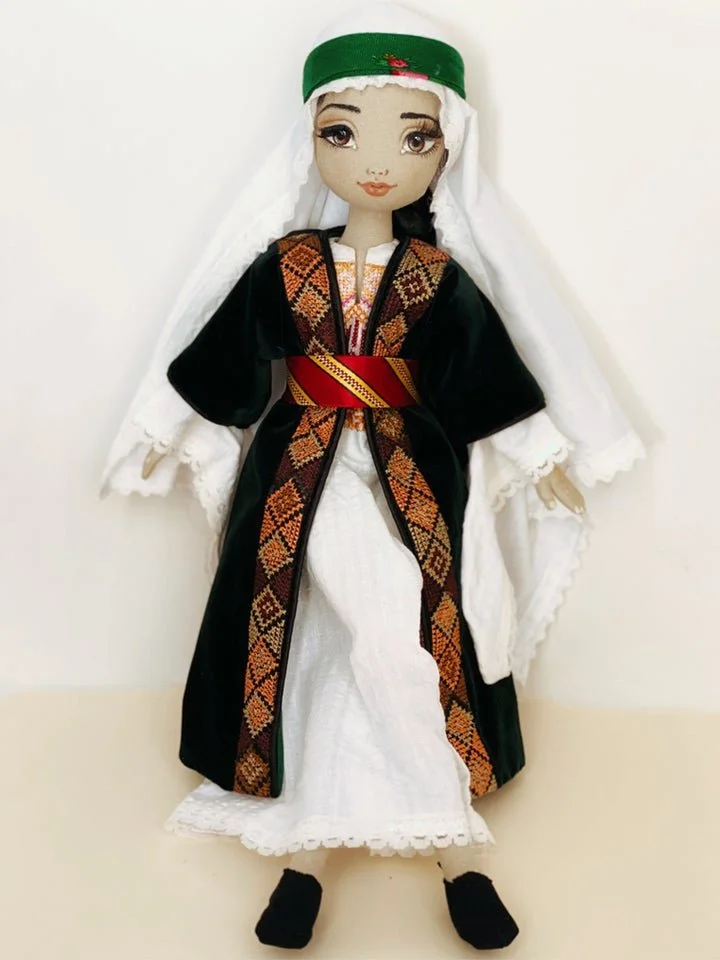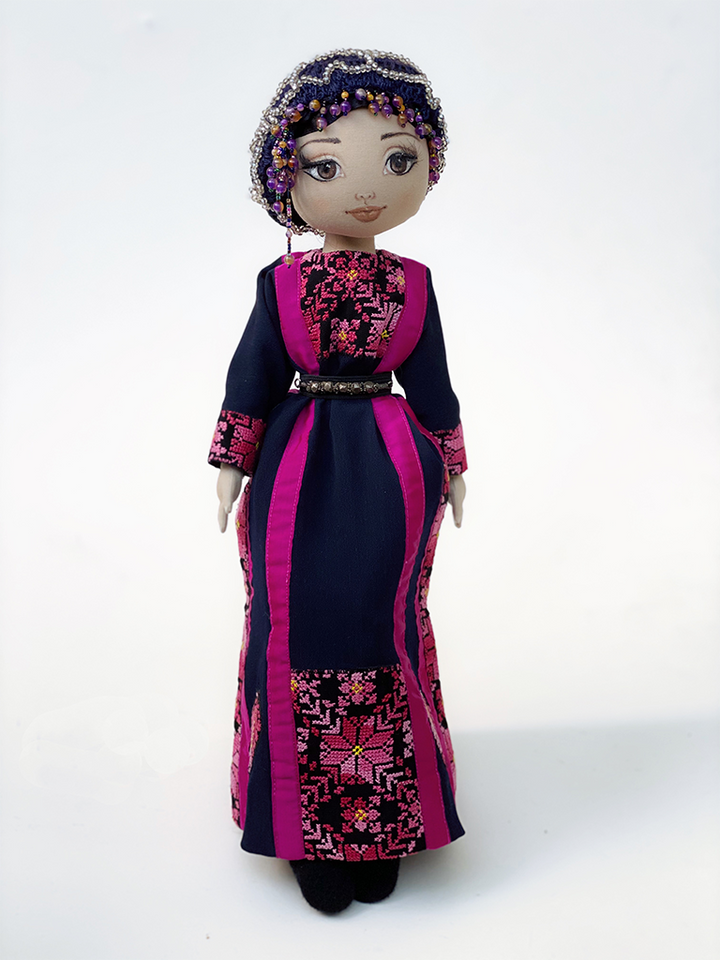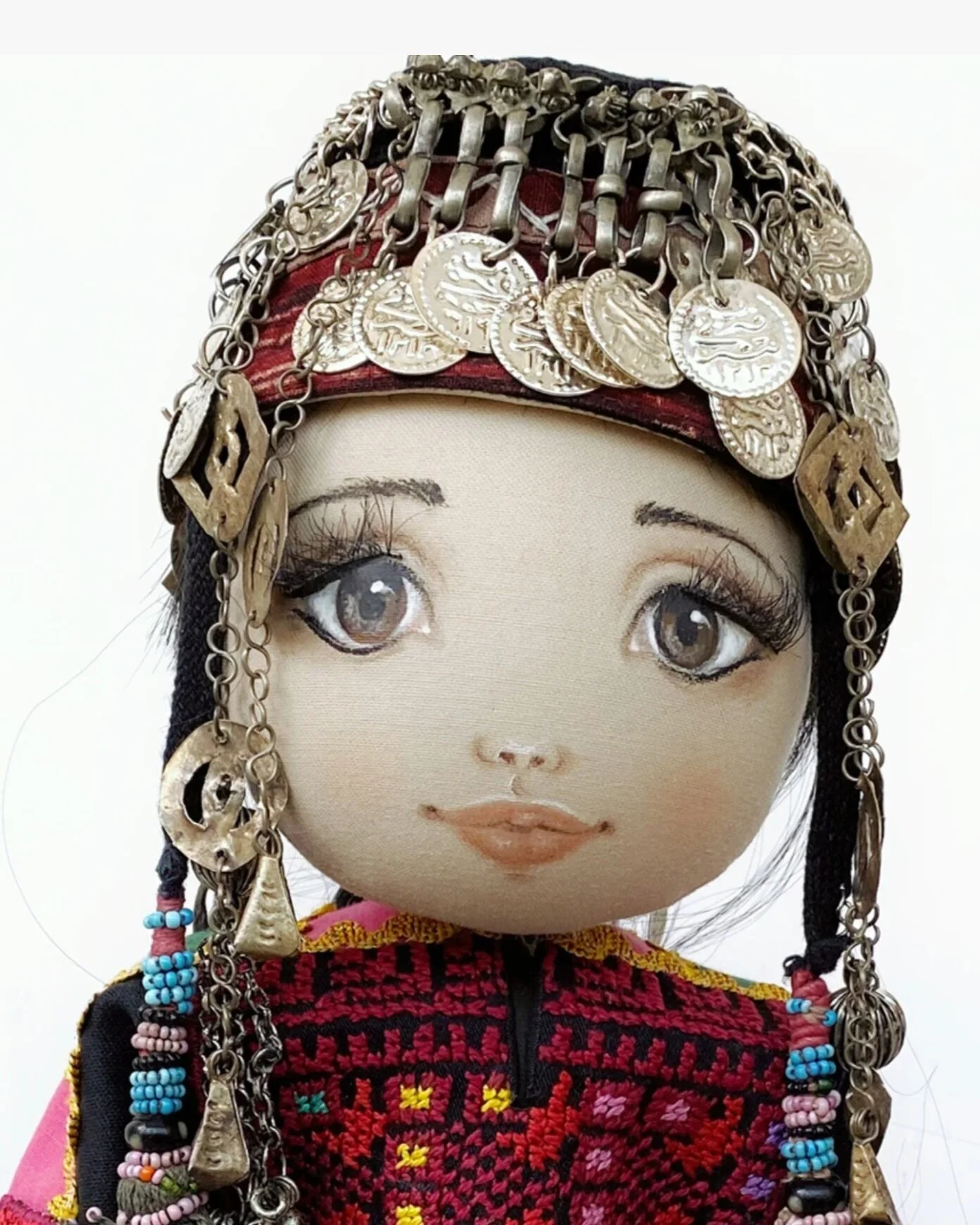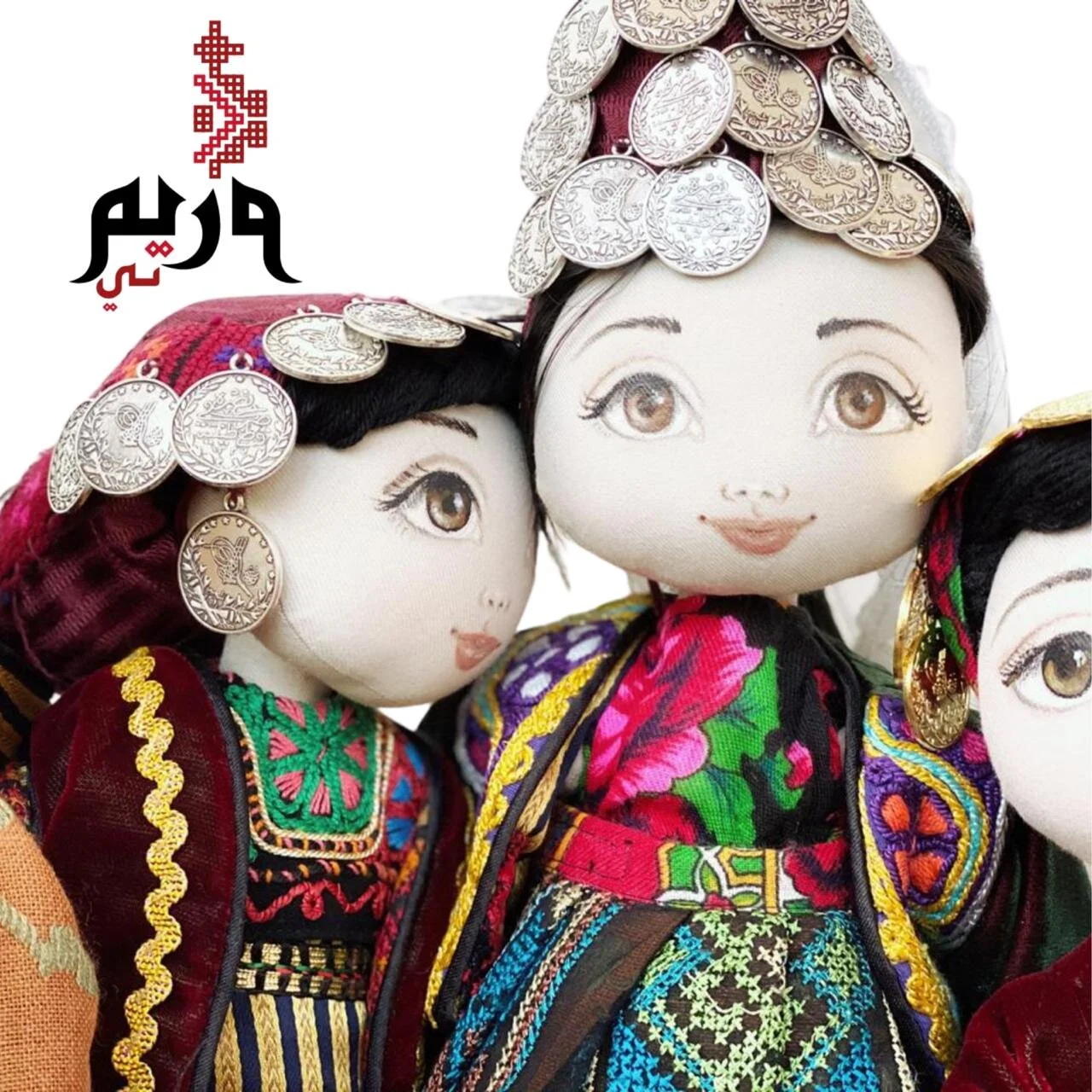Maryam, the Palestinian Doll
Maryam of Tulkarem
Maryam of Tulkarem represents the rich cultural heritage of Palestine. Adorned with a velvet coat and cotton underdress, the Tulkarem attire boasts a rich and intricate floral embroidery in celebration of the land and its farmers in this predominantly agricultural area. These hand-stitched designs, often in vibrant earthy tones, reflect the connection to the land and the skilled artistry of Palestinian women. The doll also wears a white veil (shambar) draped elegantly over the head and shoulders, a hallmark of traditional Palestinian dress, symbolizing modesty and heritage. The embroidered belt adds a decorative yet functional touch, completing the ensemble. This doll not only highlights Tulkarem’s distinctive style but also serves as a beautiful tribute to the timeless artistry and identity of Palestinian culture.
$296.18 USD
Maryam of Gaza
Gaza doll represents not only traditional Palestinian attire but also the resilient spirit of Gaza. Gaza, a small coastal strip along the eastern Mediterranean, is known for its vibrant culture, history, and heritage. Despite facing numerous challenges, the people of Gaza maintain a strong connection to their roots, preserving their customs, traditions, and artistry across generations. The traditional dress worn by this doll reflects the beauty and identity of Palestinian craftsmanship, with bold colors and intricate embroidery that tell stories of resilience, pride, and hope. Each stitch and pattern is symbolic, representing elements of Palestinian folklore and regional identity that have been passed down through families. This doll serves as a reminder of Gaza’s enduring cultural heritage, a small yet powerful tribute to its people and their unwavering spirit.
$296.18 USD
Maryam of Yafa
Yafa status as the capital of Palestine meant that the traditional attire varied from one area to the other. The city itself saw Ottoman serma embroidery influences, and military style jackets worn over dresses. The villages of Jerusalem however saw an eclectic mix of stitches, patterns and fabrics from neighboring cities. Maryam is wearing a thobe which incorporates a Bethlehem couching stitch chest panel, embroidered onto fabric sourced from Syria. On her head, Maryam wears an embroidered skull cap embellished with gold coins, a sign of status and wealth.
$296.18 USD
Maryam of Ramallah
Ramallah has always been a center of trade in Palestine. The summer folkloric costume for this city is made of cream linen known as roumi, a fabric made available thanks to the bustling Ramallah market. The embroidery of Ramallah boasts geometric patterns in rich red hues. More restrained than other costumes perhaps in style, the distinct headdress, known as the saffeh more than makes up for it in originality and sophistication. Maryam is dressed in the Ramallah's bride costume. The linen substituted for raw silk to meet the occasion in addition to a full-embroidered hair cover. She also wears gold coin jewelry, a sign of wealth and heritage.
$296.18 USD
Maryam of Nablus
Nablus has always been a prosperous city with flourishing trade in cotton and handwoven wool fabrics, olive oil and soap. The costume of Nablus is colorful, made of silk brocades and even velvet at times, with very little embroidery. Fabrics imported mainly from Syria, in a wide variety of stripes and colors created full length cross-over coats that were belted over simple cotton dresses, creating significant diversity in the traditional look of the area.
The beauty of the traditional look relied on the mixing of the colors and textures of the fabrics rather than embroidery. The cotton veil was worn outdoors and secured with either a cap or decorative headband.
$296.18 USD
Maryam of Jerusalem
Jerusalem’s status as the capital of Palestine meant that the traditional attire varied from one area to the other. The city itself saw Ottoman serma embroidery influences, and military style jackets worn over dresses. The villages of Jerusalem however saw an eclectic mix of stitches, patterns and fabrics from neighboring cities. Maryam is wearing a thobe which incorporates a Bethlehem couching stitch chest panel, embroidered onto fabric sourced from Syria. On her head, Maryam wears an embroidered skull cap embellished with gold coins, a sign of status and wealth.
$296.18 USD
Maryam of Bethlehem
The unique embroidery techniques used in the towns of Bethlehem, Beit Jallah and Beit Sahour set them apart from the rest of Palestine. Unlike the traditional cross stitch usually used, their speciality was a for of couching work in vivid colors, silver and gold threads. Designes of densely sewn curving trails of leaves and flowers decorate the chest panel of the folkloric dress. Insets of heremsy silk (saya) from Syria drapes the sides of the dress. A Trukish military influence also infused the costume. Jackets of varied lengths and styles were worn over the dress. Maryam also sports the Bethlehem hat. Decorated with coins, it is indicative of the lady's wealth and statue. The veil only worn outdoors was merely for modesty.
$296.18 USD
Maryam of Hebron
The city of Hebron has a rich cultural heritage, and the village women prided themselves on their intricately embroidered and brightly colored traditional dresses. This is in sharp contrast to the city women that were known for their modest and plain attire. The village women’s thobe, also known as a jellayeh was primarily embroidered with a pattern called the ‘tent of pasha’, they also added patchwork pieces to the front, back and sleeves of the dress. Perhaps the most treasured part of the Hebron costume is the ornate ‘wuqayat al darahem’, or money hat. A cotton headdress adorned with tassels and a variety of coins. This dramatic piece was reserved for ceremonial occasions, primarily the bride’s wedding day. This type of headdress was also shared amongst kin, collecting more and more coins over the years.
$296.18 USD
Maryamti dolls are our mini versions of Maryam.. Just like in life, younger generation’s take traditions and bend them to their own needs and attitudes.. so have our Maryamti dolls! We’ve taken bits and pieces of the rich Palestinian tatreez tradition and mixed and matched them. You’ll always know where the inspiration and origin is from, thus preserving our history.. We owe it to our common heritage.
Handmade with love and devotion. Each doll stands at 30cm tall.
Each one of these dolls is a unique one-of-a-kind doll that cannot be duplicated.









